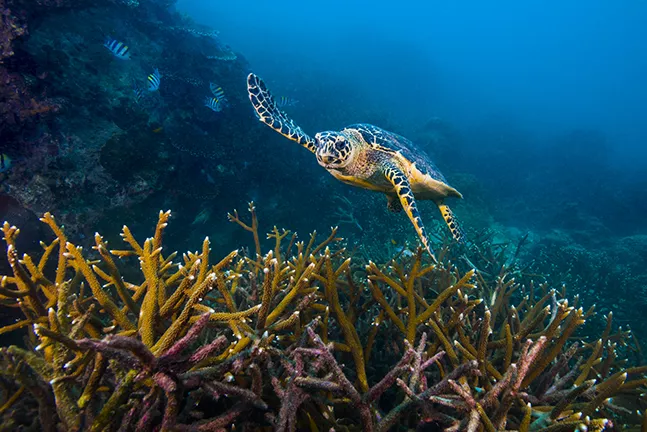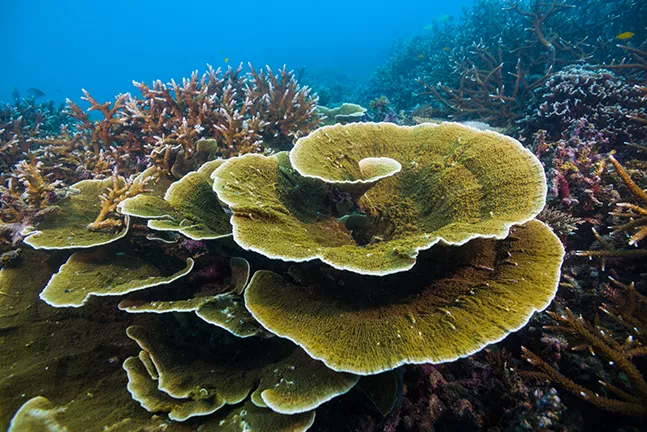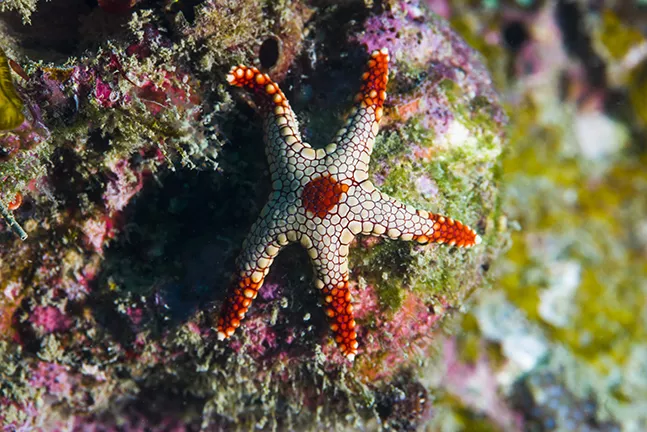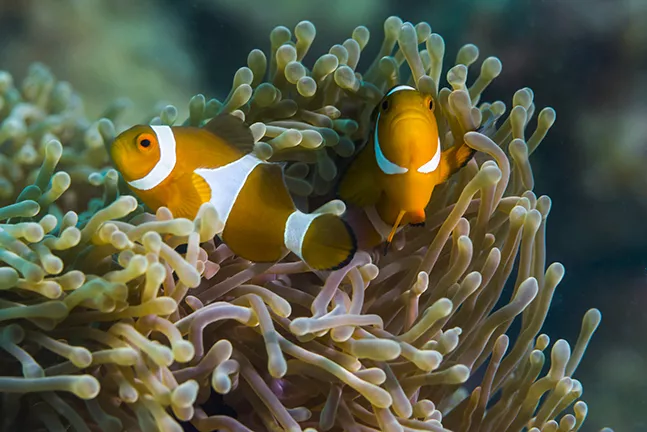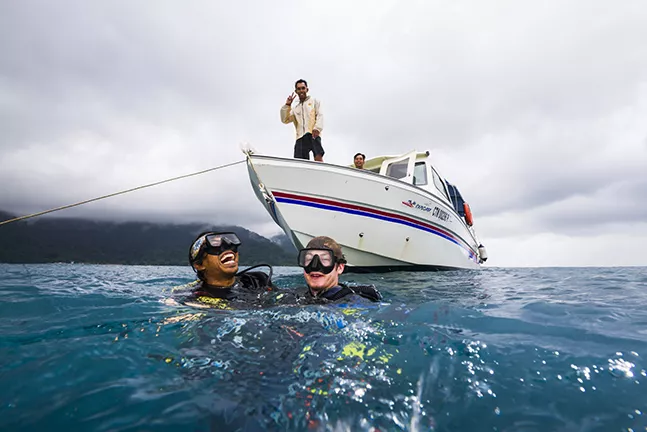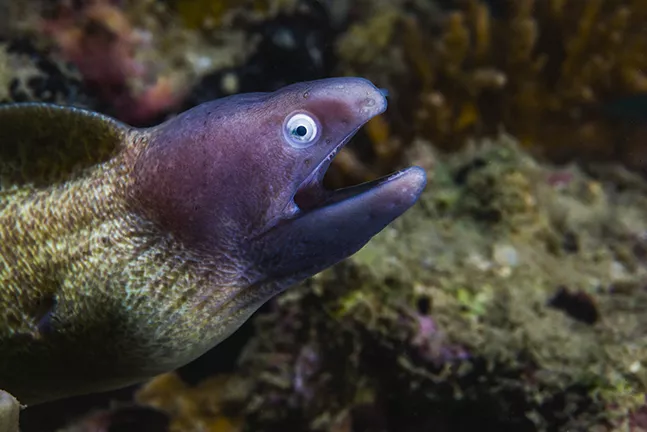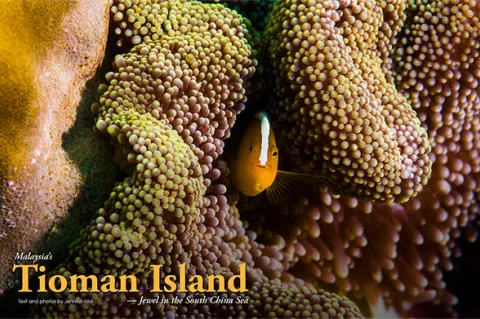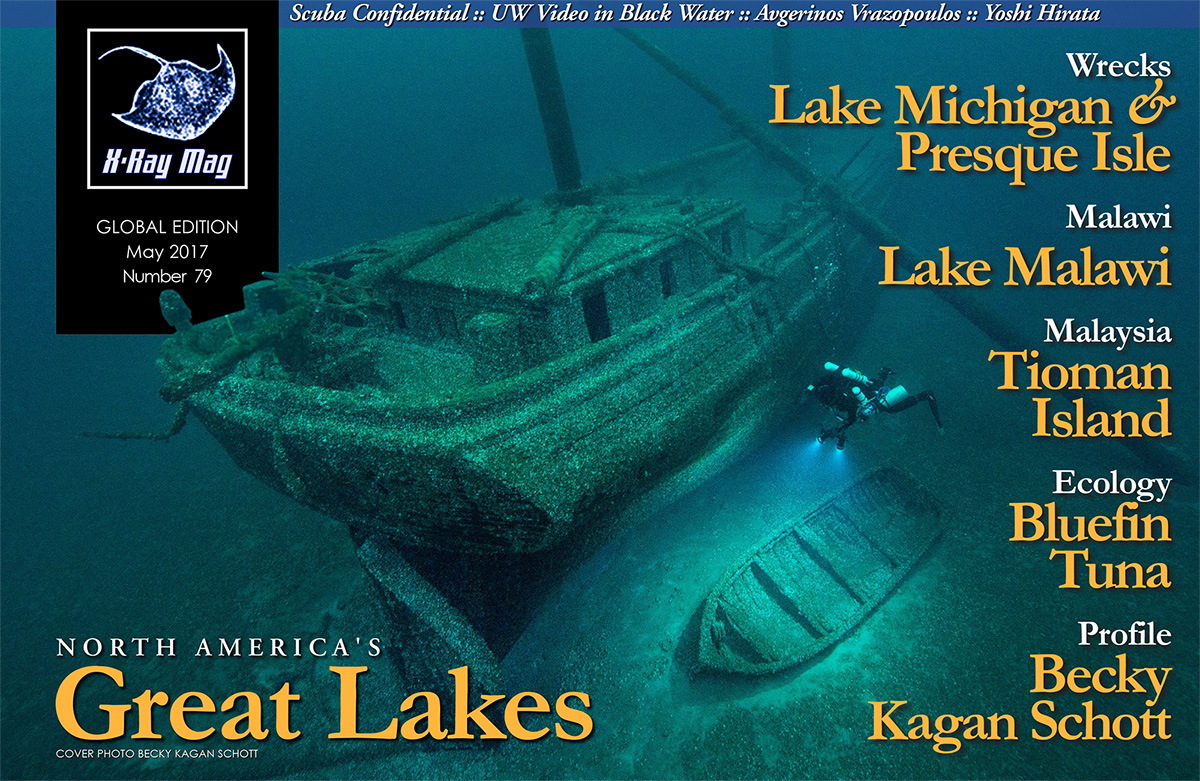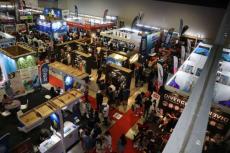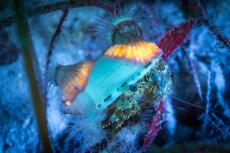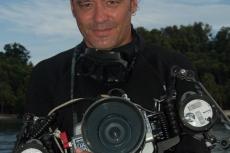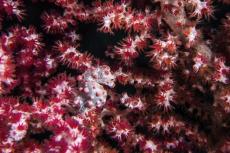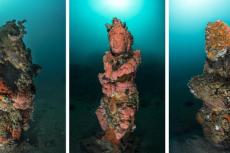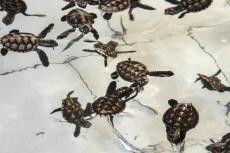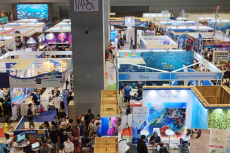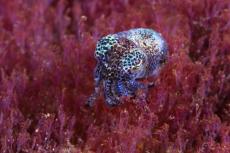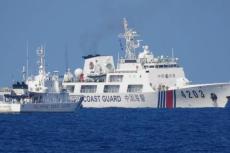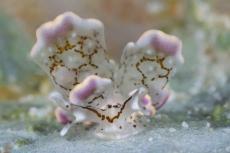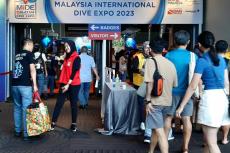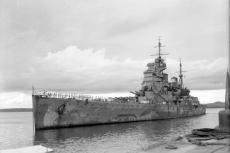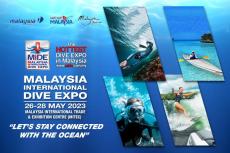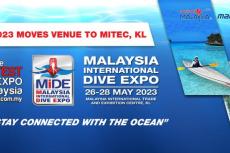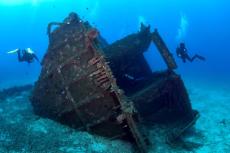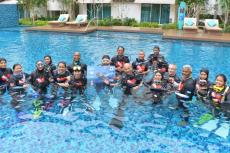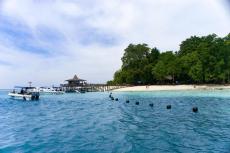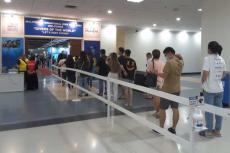Hollywood is attributed with recognizing the natural beauty of Tioman Island in the 1950s as an exotic tropical paradise. Having seen one of the films as a child, it created an impression of a place I would like to visit someday. I never imagined it would set the stage for my first experience of diving in Malaysia. Tioman delivered on an enchanting dream.
Contributed by
Factfile
Jennifer Idol is the author of An American Immersion and an underwater photographer. She’s earned 28 certifications and has been diving for 21 years. A native Texan, she creates design and photography for her company, The Underwater Designer. Visit uwDesigner.com to see more of her work. To learn more and buy her book, go to: AnAmericanImmersion.com.
REFERENCES:
Abdullah, N., S. Seth, Y. Mukai. Coral Reef Fishing in Tioman Island.
Allen,G., R. Steene, P. Humann, Ned DeLoach. Reef Fish Identification Tropical Pacific. New World Publications. Second Edition. 2015.
DAN
DOSM
Gosliner, T.M., a. Valdés, D.W. Behrens. Nudibranch & Sea Slug Identification. New World Publications. September 2015. p.209
Humann, P., N. DeLoach. Reef Creature Identification Tropical Pacific. New World Publications. First edition. 2010.
Nature Society (Singapore)
UWExplorers
US CDC
Wikipedia
World Travel Guide
Ying, H., C. Heng, A. Abdullah. Language vitality of Malaysian languages and its relations to identity. June 2015. Volume 15(2).
Malaysia is an independent country comprised of 13 states, represented as the stripes in the current flag, and three territories. Locals refer to the states as individual countries and think of Malaysia more like the United Kingdom. The crescent on the flag represents Islam, the official religion, though Malaysia is home to many religions.
The flag has changed over time, as has the country’s ruling. Portugal, the Dutch and the British Empire have all established a presence in the past, followed by the British East India Company, Japan and Chinese influence. Singapore has been a significant port from its historical past. Influences from the multitude of occupants pervades the culture, making Malaysia both familiar and unique.
Diving in Malaysia is famously known for the Sipadan area on Borneo, near Tawau in Sabah on the lower left side of the Coral Triangle. However, Tioman Island is a quiet secret just north of the state of Johor in Pahang. Tioman is a unique ecozone with different species from those east of the Wallace Line, an imaginary line created by British naturalist Alfred Russel Wallace.
I was honored to be hosted by B&J Diving Centre, the largest dive operator on the island and a five-star PADI Instructor Development Center. They certify at all levels of diving and support technical diving, including rebreathers and trimix. Last year, they celebrated 30 years of operations, having started as Ben’s Diving Centre with the current owner’s father in 1986. When Jean-Claude joined the business, they renamed the dive center B&J Diving Centre.
I enjoyed learning about the culture, food and history of the island from their instructors. Tioman Island was first popular with backpackers in Salang. I stayed in the newer accommodations at Tioman Dive Resort in Air Batang (ABC Bay) at the foot of the jungle. The villages are home to a few buildings along the shoreline, before the steep mountains rise, with a lush rainforest.
Roads to Tioman Island
Reaching Tioman takes a little coordination, due to its remote location east of the Malaysian peninsula. It is easier to reach it from Europe and Asia than anywhere else, but is a worthwhile journey for anyone. Half the visitors come from Europe, with the rest of the majority from Malaysia and Singapore.
I recommend flying to Singapore and then taking a bus to Mersing, from where you can take the ferry to Tioman Island. Uber works in both Singapore and Kuala Lumpur, another arrival city. The OneWorld airline alliance operates through several airlines. If you book with American Airlines, check which airline operates your flight and review their baggage restrictions, since you will need to follow their carry-on limits and not just your first flight’s rules. Japan Airlines operated the cleanest and most enjoyable flight I have experienced.
Coming from long distances such as the United States means adjusting to a significant time difference. The flight delivers food, drinks and snacks, according to the mealtimes and cultural tastes of your arrival city to ease the transition.
Once in Malaysia, Transnasional is a leading bus company used by many dive operators. Bluewater is the ferry company that leaves the port in Mersing to reach Tioman Island. Both can be booked through easybook.com, but tickets can also be purchased on-site at the bus and ferry windows. Booking ahead of time means a guaranteed seat. Larger luggage can be stored underneath the bus and small bags carried on board. Buses leave on time, but the ferry may run late and arrive an hour past the time it is due—something to consider when booking your return bus.
Note the rules for ticket exchange when booking buses and ferries. Print your bus confirmation ahead of time and exchange it for a bus ticket at the main bus station ticket window, at least an hour before your bus departs. When you reach the ferry terminal, exchange your ferry pass at a counter ("kaunter") for a reservation slip. Then, pay the marine park fee and verify your passport at the window at the end of the counters. Since 1985, Tioman Island has been designated a marine park to protect surrounding coral reefs by limiting boat anchoring to designated mooring areas and docks.
Lastly, show your reservation slip at the booth by the waiting area to receive a laminated boarding pass. Hand your boarding pass to the collecting crew member before boarding the ferry. The crew will help you place your luggage according to destination in a public storage place near the door. Keep small bags with you and do not lose sight of them or forget your belongings. Find your seat assignment as written on the reservation slip. Seat numbers are written on the port and starboard walls of the boat above the windows. The ferry takes two hours to reach the first dock on Tioman Island.
If you are traveling as a group with B&J Dive Center and arrive in Singapore, they can coordinate transfers and can pick you up from Mersing in their speedboats. Through the dive operator, you can reach the island within four hours of your arrival in Singapore.
The ferry and bus are both very inexpensive and easy to navigate for individuals or couples. If you are traveling by ferry to B&J Dive Center, they are either the fourth or fifth stop, depending on which of their accommodations you booked.
Fortunately, many travelers have not yet discovered the affordability of diving on the island. The biggest expenses for a dive trip here are the airfare and time. Its seclusion has kept it a quiet island devoid of crowds, tourism and the ecological pressures caused by development to cater to these demands.
Diving experiences for all levels
The ferry drops you off at the pier where a scooter with a cart picks you and your baggage up if you are staying at B&J Diving Centre. Since no major road has been built on this part of the island, all vehicular traffic takes place through scooters and bicycles on what looks like a large sidewalk. It makes for a quiet reprise away from urban living. The dive center is only a short jaunt around the corner. They welcomed me immediately and set me up with my room, dive waivers, dive plans, procedures and equipment needs.
I bring my dive equipment to every destination, but always rent cylinders and weights. The dive shop had all the equipment available for rental and some for purchase. Malaysia works on the metric system, so gauges are in bar, depths are measured in meters, and temperatures are written in Celsius. No wetsuit is necessary for most divers, though a full skin is recommended. I found the 26°C (80°F) water cold during the monsoon season (but I also think the Caribbean is cold), so I wore a 5mm suit. The temperature is usually a bit warmer.
Both shore and boat diving are available around Tioman through the dive center. They assigned a bag for my equipment during my stay. Bags are numbered and loaded onto boats for dives. Divers meet the boats on the same pier as the ferry at 8:30 each morning for two dives. Afternoon and night boat dives may also be scheduled.
Diving on Tioman is part of the South China Sea with a maximum depth of 70m (230ft). Most dive sites are shallow, but deeper diving is available. The coral reefs cover granite boulders that support a diverse ecosystem and create swim-throughs such as on Labas Island.
To take you to any dive site, B&J Diving Centre maintains three speedboats and a large wooden boat. I found all the boats sizable and geared for efficiently managing divers with sturdy ladders and open space in the middle.
Tioman Island is situated in a north-south position with attractive dive sites such as Fan Canyon, Batu Malang, and Labas Island in the north. However, those sites are open to wind and surge, so must be visited during the best season. I repeatedly saw requests for Tiger Reef on the dive site board at the store. Tiger Reef is an advanced dive named for the shape of the submersed pinnacle. It features strong currents and is less often visited by divers, so there is little human impact.
While I traveled during the monsoon season, the best season is from mid-March to late May, and mid-September to late October for the best visibility with smaller numbers of visitors. The clear waters brought to Tioman comes from the Gulf of Thailand during the monsoon season when the winds are from the north. Plankton-rich water bring nutrients necessary for reef life and poor visibility outside these times from Singapore. Europeans mostly travel to Tioman from April to August and again in October.
I explored Renggis Island and the KM Sipadan wreck, southern sites just a few minutes from ABC Bay. Renggis is also a snorkeling destination and home to sea turtles, cuttlefish and sharks. Two blacktip sharks passed us on our dive and two sea turtles spent ample time hunting for food on the reef around the staghorn coral forest. This is the densest staghorn I have seen.
I saw my first anemonefish and anemones in the wild. They are very active fish that hide within the anemone for protection and swim just above them when they feel safe. Observing them made me appreciate the photos I have seen even more since they are fast moving and always seem to look soft rather than sharply defined. Their orange is so vibrant it seems to glow from within. I understand how their cuteness entrances divers.
KM Sipadan is a deep artificial reef just north of Renggis Island that was sunk in 2012. Under the name KD Sri Sarawak, this was a Royal Navy warship that served from 1964 to 2005. This is the only dive on which I used nitrox to help with my allowable bottom time, though it is available on any dive to certified divers who prefer nitrox. Two Thai fishing boats are connected to this wreck. I spent my time exploring the KM Sipadan, observing nudibranch and red lionfish. I reached the ship down the mooring line at 20m (66ft) and swam through the empty hull at 27m (90ft).
Most of my dives were done on the ABC House Reef in front of the resort. Although known as a training destination, much of the natural resources are untouched and healthy. The bay protected the water from currents and waves. To escape rough seas, even the fishermen moored in the bay. No fishing is allowed in the water surrounding Tioman Island and the other eight nearby islands because of the marine park designation. The number of boats fishing in nearby waters is still numerous with many focused on specific species such as squid. I was grateful that some protection was in place.
The shore diving was easy with a sandy path between boulders in front of the resort leading to their major reefs, House Reef 1 and House Reef 2. Ghost Town is named after the artificial objects laid to promote reef growth. I was also told it is an unusual and unexplained site for how sculpture and rocks were left behind. I noticed the rebar in place on the way to House Reef 1 to encourage coral growth beyond the main biomass.
This is a macro world. Some of the unusual creatures I like to photograph, like the flathead, puffers, lizardfish and porcupinefish, seemed to regularly occupy House Reef 1. I was most surprised by the colorful boring giant clams buried in the granite boulders. Dozens of them reached for food in the current. A few were as big as a melon. Maxima giant clams on Renggis Island were the size of basketballs. They came in all colors, but I was most drawn to the blue and teal colored clams. They were quick to shut as I swam over them, but reopened if I paused.
Between the reefs, a sandy bottom hosts gobies, crabs and shrimp. I nicknamed this area “Goby Desert” and relished watching them dart into their holes. As I looked closer, I also was able to see an alpheid shrimp cleaning out a hole while its host goby shrimp watched for predators, ready to warn of danger. These animal interactions were so captivating that my dives reached 90 minutes, easy to do in these shallow reefs. I could only pull myself out of the water long enough for meals. Shore dives did not limit me to the boat schedule.
House Reef 2 was my favorite as it featured eels, nudibranch, hard and soft corals, and more anemonefish. This reef seemed more diverse with more variety in the size and number of animals, compared to House Reef 1. I passed it again when I dove from the jetty back to the resort. You never know what you’ll find passing by the jetty, so I hopped in to look at the possibilities.
Life bound by environmental change
While the biodiversity on Tioman Island was rich and included healthy reefs with invertebrates, hard and soft corals, small fish, medium fish and large fish, it is not immune to environmental effects on the waters surrounding the island. For the last two years, the waters have been warmer than usual. The hard corals show signs of stress with some bleaching, especially noticeable on the staghorn. A 2010 bleaching event also severely impacted reefs reaching across the entire Coral Triangle. Last year, the island experienced a severe drought, limiting the availability of fresh water.
B&J Diving Centre works hard to operate as an eco-resort to help educate visitors and reduce their impact. They participate in the PADI Project AWARE program and have been awarded the PADI Green Star™ Award. This means they have demonstrated a commitment to conservation that includes water conservation, energy use, environmentally friendly transportation practices, use of sustainable materials, conservation leadership and a donation to conservation through Project AWARE. I found they did not just participate in these programs, but they also embody responsible behavior. They encourage visitors to turn off the lights and air-conditioners, and to unplug when not in the room.
The dive center also supports the reduction of plastic use. Filtered water is available at the resort, so you can use the bottles they provide, or refill your own container rather than use bottled water. Tupperware is available for taking to restaurants to store leftovers or grab takeaway food. Unfortunately, the island still uses styrofoam and plastic bags. I brought a dry bag and canvas tote for my needs.
B&J Diving Centre works hard with local vendors and visitors to help promote more sustainable practices. Trash can be observed throughout the island, but the situation has greatly improved. Waste management is an ongoing education project for all of Malaysia. The center conducts several beach and reef cleanups throughout the year. They recently recovered a ghost net left by one of the fishing vessels.
Where everybody knows your name
I love to experience the food and culture of a place when I visit for a dive excursion. People were extremely friendly and happy to share their love of Malaysia. The island is small, so I got the sense that everyone knows more about everything than you would perhaps like if you lived here. The camaraderie was wonderful to see as neighbors seemed helpful and exchanged services.
Malaysian food did not seem exotic to me. Instead, it seemed more like a fusion of cultures I was already familiar with. This created its own unique flavors, from nasi lemak, roti canai, satay, to curry puffs and Mamak’s fried noodles. I tried as many foods as I could, eating a different meal each time. I highly recommend getting to the NS Corner early for pastries, especially the curry puff. No sign is outside this place. Only a glass case that says "OPEN" in the morning indicates you have found the right place. It closes once all the pastries have been sold. Coffee and tea can be ordered either hot or cold and with or without sweetened milk and is served in small cups.
Restaurants on the island may resemble huts more than a commercial building. They are all open air with a collection of some tables and chairs. Sometimes, a restaurant had an obvious name outside and at other times, it did not seem to bear any name. The sandwich shop is clearly marked Ketapang Roof. Sunset Bar is available for pizza, fried chicken wings, and chicken sandwich when it is open.
Payment is accepted after you receive your food. Tipping is not customary in Malaysia, which is hard to accept because the food prices are so incredibly low. They will provide exact change for your meals and will not round up—only the divemasters receive tips at the diving center. There is also a tip jar on the counter if you prefer to leave a overall tip at the end of your stay.
Until we meet again
Some guests and instructors came for a short trip but stayed a year or more. Falling in love with Tioman Island is an easy feat. The island itself is fabled to have been formed by a dragon queen who fell in love with the place and transformed herself into the island. My visit was all too brief, giving me just enough of a glimpse to know that the reefs here are a treasure to be loved, carefully tended to and not forgotten. ■
Special thanks to B&J Diving Centre and Tioman Dive Resort (divetioman.com).

